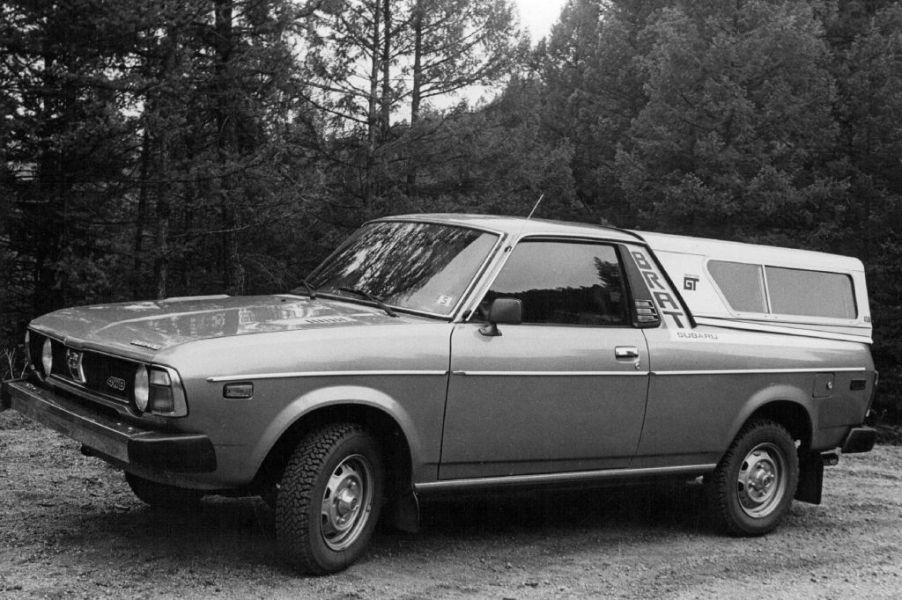
The Subaru BRAT Continues to Confuse People
Every so often, we see a vehicle enter the market that makes a splash either for its exterior styling, performance, or its unique features. In the 1970s, there was one such truck, car, or station wagon, that did just that, but it’s odd looks made people wonder which type of vehicle it actually fell under.
Some people might remember that one-of-a-kind pickup that Subaru produced in the late ’70s. It manufactured it as a trucklet, of sorts, or a compact pickup, but they meant it to mirror the likes of the El Camino, the truck/car combo. How exactly did that vehicle come about? Auto week tells the tale of its beginnings with an interesting twist.
History of the Subaru BRAT
The BRAT, or Bi-Drive Recreational All-terrain Transporter, was Subaru’s answer to a compact truck produced in 1978. When these light trucks were making a splash in the market from the likes of Ford and Chevrolet, Subaru wanted to get in on the action. They developed their own little truck. Without a substantial budget to create a whole new design, though, they had no choice, but to take a wagon and cut off part of the rear section.
All BRAT vehicles came with a button that would switch the BRAT’s all-wheel drive option on and off as needed. The engine was a simple 1.6-liter flat-four coupled with either a 3-speed automatic transmission or a four-speed manual one.
In 1981, the BRAT got an engine upgrade and went from a mere 67 hp to 73 hp with a newer 1.8-liter motor. A few years after that, Subaru offered a turbo engine as an optional feature that could get you 93 hp of performance.
What made this truck so unique?
The number one unique feature of the BRAT came about by an unlikely event. Trade tariffs wars began when some countries became concerned about the U.S hold on the trade market for chicken, edging others out of the competition.
So, some imposed a tax on the chicken that Americans exported to other countries. Lyndon B. Johnson answered that “chicken tax” with his own for various items, one of them being light trucks. They put a tariff in place to charge a hefty 25% tax on importable light trucks that came to America. While most of the taxes, placed at the same time, became non-existent, the one on light trucks continued.
Countries started coming up with ways to get around paying such a large sum to get their pickups on American soil. Subaru’s answer to get by the tax, was to install a set of rear-facing seats in the trucklet’s bed, with seat belts. The intent was to make it pass for a passenger vehicle so it would be exempt from the large tariff. It worked, and that’s how the styling of the BRAT came to be. Just a simple trick to avoid paying a large sum of money.
Why did the Subaru BRAT fail?
In the beginning, the BRAT saw much success, selling a hundred thousand units a year for the first few years. It continued selling in the U.S until 1987, but Subaru still sold it elsewhere until pulling it from production in 1994. The sales were declining, as the fad of compact trucks wore off and more powerful choices started hitting the markets. The BRAT couldn’t keep up, so it faded away into collectible history.
It did, however, have a revival, of sorts, from 2003 to 2006 with a new name, the Baja. Subaru gave it a modern-day styling and a 2.5-liter four-cylinder engine. But, it didn’t have a very successful run, only making about 30,000 vehicles before ending production and the legacy of the trucklet that the BRAT brought.
The BRAT may no longer be in production, but it brought an interesting twist to the pickup market. Nowadays, finding one of these vehicles is a little more difficult, but every so often one pops up in the used car ads or in a collector’s garage. The only issue being the rear-facing seats may not be insured for use on the roads today, as we see from Jalopnik’s article.


